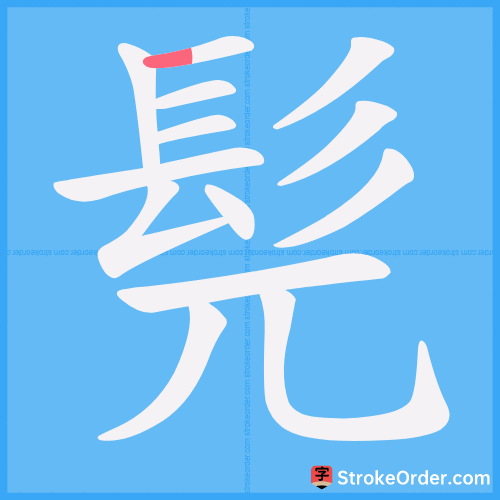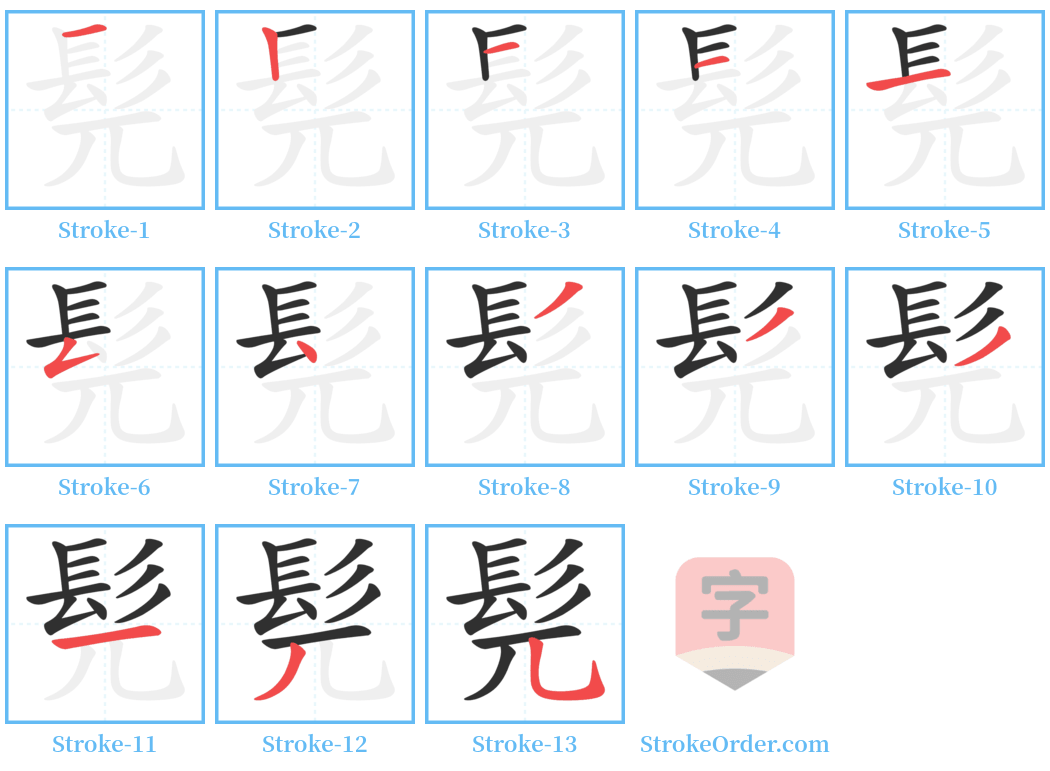髡 Stroke Order
Animated Stroke Order of 髡

Stroke Order Diagrams for 髡

Step-by-Step Handwriting Guide for 髡

Learn to Write Chinese Characters with Video Tutorials
Watch the video of writing the Chinese character "髡", learn the correct stroke order (笔顺) of the character "髡", and master the standard way of writing the character "髡".
Free Printable Handwriting Practice with Stroke Order: 髡
Printable Writing Practice Worksheet of "髡" in Portrait Orientation (Tian Zi Ge)

Printable Writing Practice Worksheet of "髡" in Landscape Orientation (Tian Zi Ge)

Information of 髡
Pinyin
kūn
Radical
髟
Strokes
13 strokes
Usage
★★★★
Definition
make the head bald
髡 (kūn)
1. Ancient punishment of shaving off the hair of a male criminal.
古代剃去男子头发的一种刑罚。
Example: 髡首 (to shave off hair, bald). 髡钳 (to shave off hair and use iron rings to restrain the neck).
2. In ancient times, it referred to monks.
古代指和尚。
Example: 髡人 (monk, priest); 髡缁 (a Daoist, a term referring to Daoism).
3. In ancient times, it referred to trimming tree branches.
古代称修剪树枝。
Example: In farming context, it is used as cutting branches for better cultivation.
Originating Meaning: Ancient punishment of shaving off the hair of a criminal.
本义: 古代一种剃去头发的刑罚
Character Formation: Phonetic-visual character.
造字法: 形声。(kūn) 从髟( biāo),与毛发有关,兀( wù)声。
Synonyms:
1. Same as original meaning ([En.] ancient punishment of shaving off the hair of a criminal)
同本义 ([En.] ancient punishment of shaving off the hair of a criminal)
2. Trimming branches ([En.] lop off tree branches)
剪去树枝 ([En.] lop off tree branches)
Examples:
- 髡刖 (ancient punishment, cutting hair is called 髡, and cutting feet is called 刖)
- 髡发 (shaving off the hair)
- 髡首 (to shave the hair, bald)
- 髡人 (a criminal who has had their hair shaved)
- 髡头 (bald head; same as 髡首)
Input Method for 髡
Pinyin
kun1
Wubi
degq
Cangjie
shmu
Zhengma
chgr
Four Corner
72212
Unicode
U+9ae1
Same Pronunciation Characters